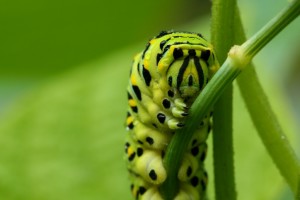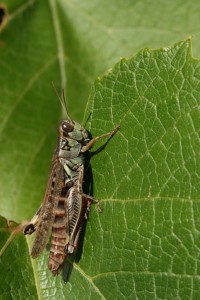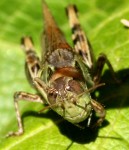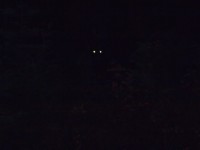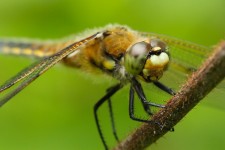We often assume the world looks the same to everybody, including animals, but it doesn’t. A red tulip isn’t red for everyone. The details on a flower petal cannot be seen by every animal either.
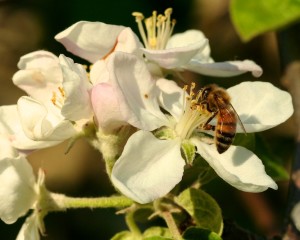
Despite the showiness of flowers, bees find nectar by seeing ultraviolet light patterns on the petals
There are many types of eyes and ways in which eyes “see”. The standard to base other animal’s eyesight against is the human eye because that is what we know and can see.
The retina of a human eye contains photoreceptors that includes both cone and rod cells. Humans have three types of cone cells that allow us to see in red, green and blue. Those who are colorblind lack photoreceptors for certain colors and cannot see certain colors or in rare cases all colors.
Humans also have rod cells that detect small amounts of light and allow us to see in the dark. Our cone cells “turn off” at night which is why we can’t see color at night.
Our “camera eye” allows the lens to focus light on the retina. Birds, amphibians, reptiles and mammals also have a “camera eye”. However they may not see the same colors or at the same sharpness.
Dogs, cats and squirrels only have two kinds of cone cells so they can only tell yellow from blue but not red from green. Cats have more rod cells than humans so they have better vision at night.
Prairie dogs are red/green colorblind so they perceive their grassland world in blue, yellow and grey.
On the other hand, birds can see red, green, blue and ultraviolet light. Some birds even have sharper vision than us, like owls and eagles. Owls can see a moving mouse 150 feet away!
An eagle has two-and-a-half times the resolution of our eyes (probably where the term “eagle eyes” came from) since they have one million light-sensitive cells per square millimeter of retina compared to our 200,000 cells per square millimeter. Eagles also have the advantage of being able to change both the lens and cornea to bring objects into focus, compared to us only being able to change the lens, which increases their focusing power.
On the other end of animal vision are earthworms, leeches, caterpillars and jellyfish that only have eye spots. The tiny light-sensitive cells of an eye spot sense light or dark–no color, no picture.
Slightly more refined are pinhole eyes that are found on giant clams. Their eyes are small openings that focus light as it enters and helps create a dim image.
Completely different are compound eyes. If you’ve ever looked closely at a housefly or dragonfly, you’ve probably noticed their eyes are composed of hundreds of separate units (called ommatidia). Scientists once believed that the end picture from a compound eye was a separate image for each ommatidia but they now believe the brain combines all the information into one image.
Intuitively, the more ommatidia within the eye, the better the animal can see. An ant has several hundred ommatidia in each eye, a housefly has 2,000 ommatidia and a dragonfly has 30,000 ommatidia in each eye! Other animals with compound eyes include bees, butterflies, beetles, shrimp, crabs and lobsters.
Even though a bee’s compound eyes contain thousands of ommatidia, their vision is extremely low resolution and blurry. However, their cone cells make up the difference because they are able to see in yellow, blue and ultraviolet light. Being sensitive to ultraviolet light allows a bee to spot patterns on flower petals that signal nectar.
Can you imagine having 12 different kinds of color-sensitive cells? The mantis shrimp does and probably sees more colors than any other animal. But what does that look like?
The world as animals see it can be completely different than the way we see it in more ways than just color and sharpness. Find out more ways animals see differently in next week’s column.


